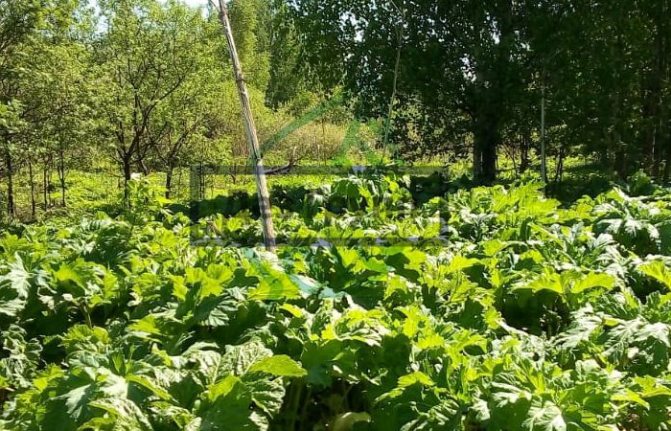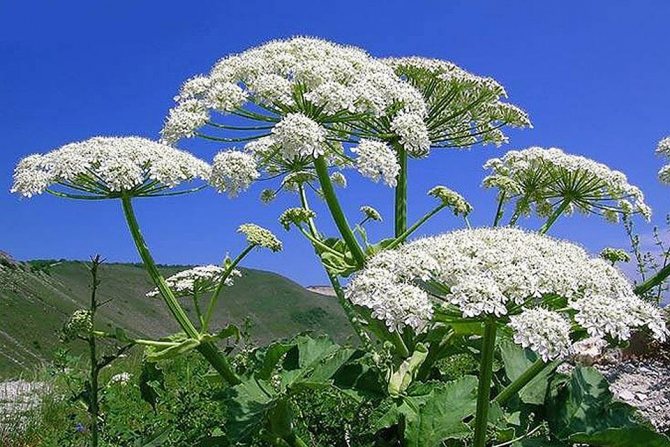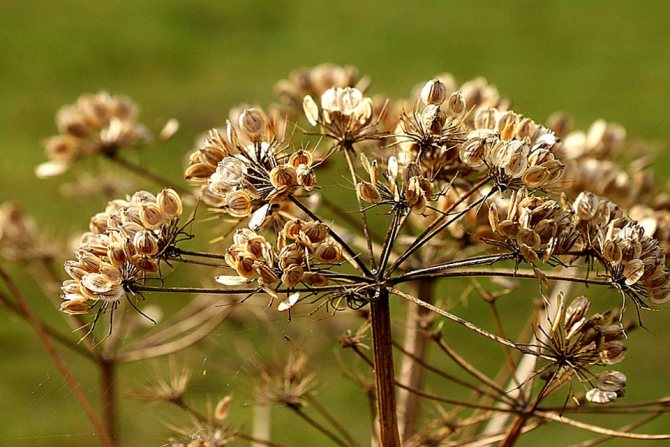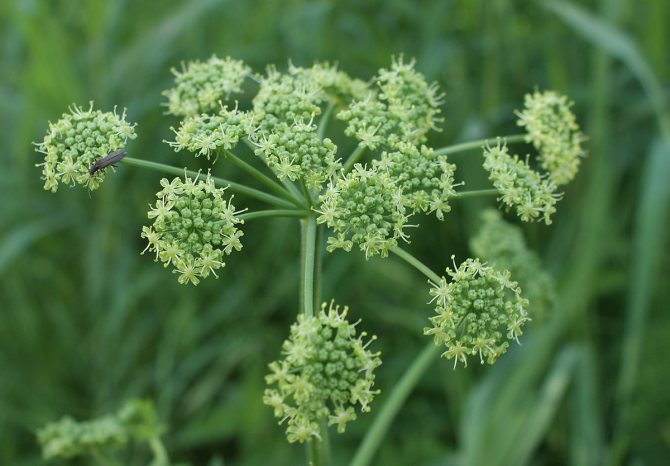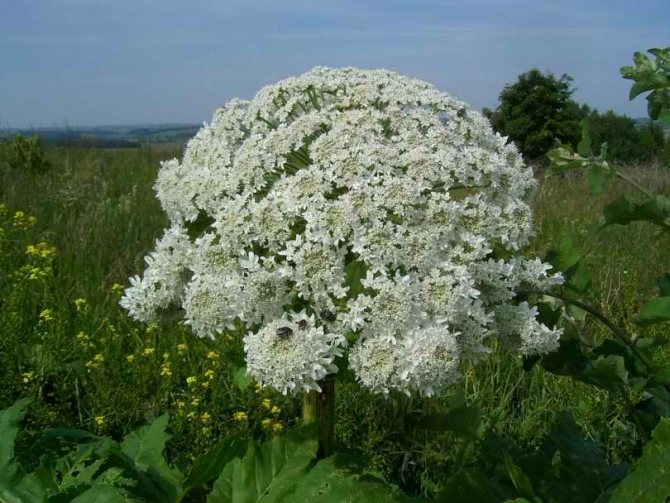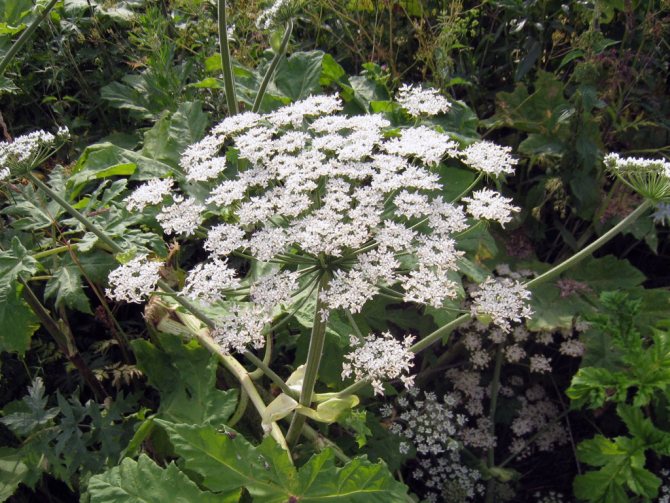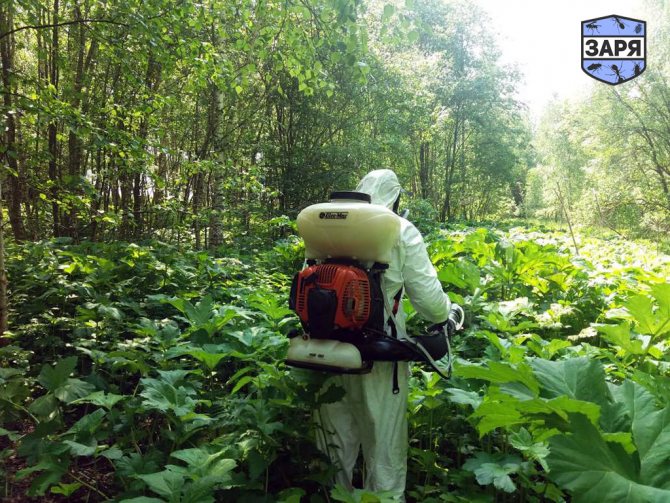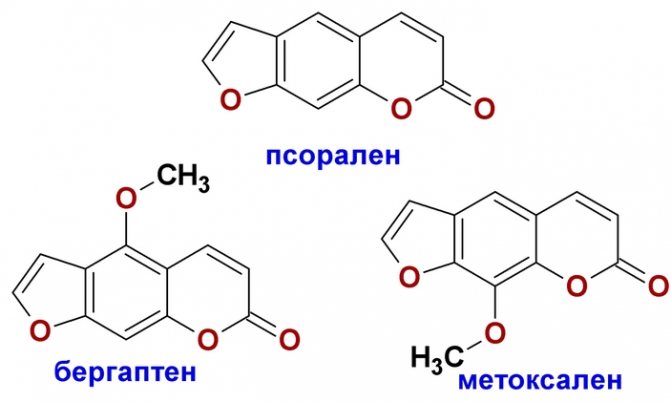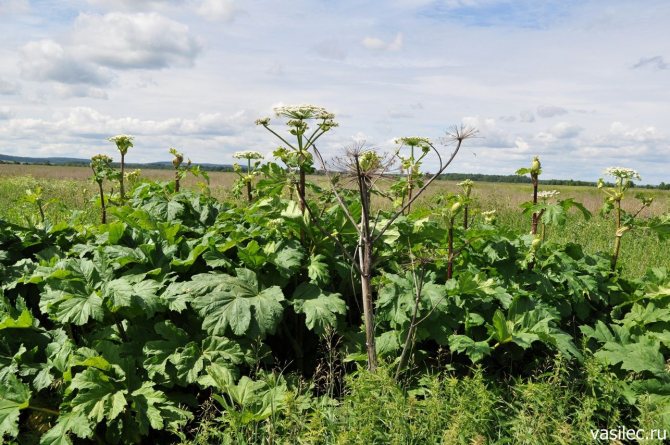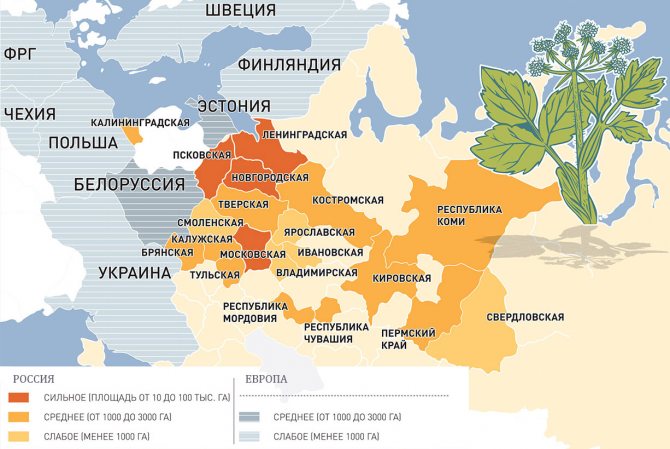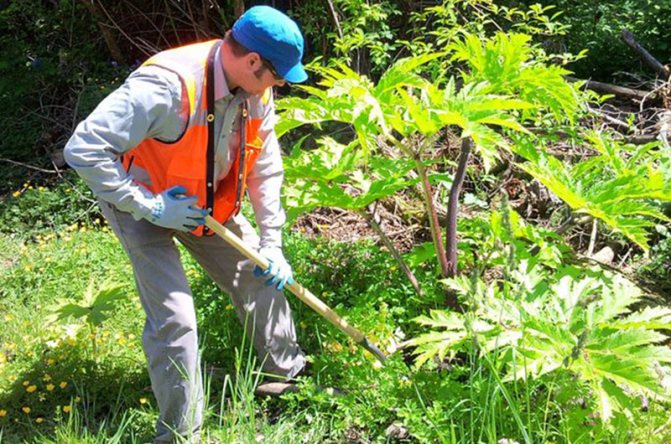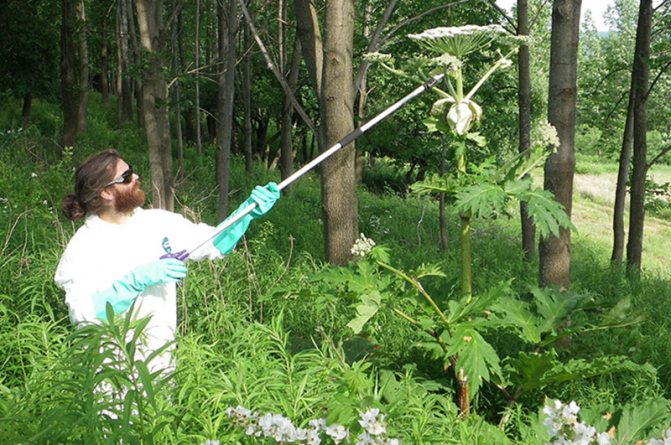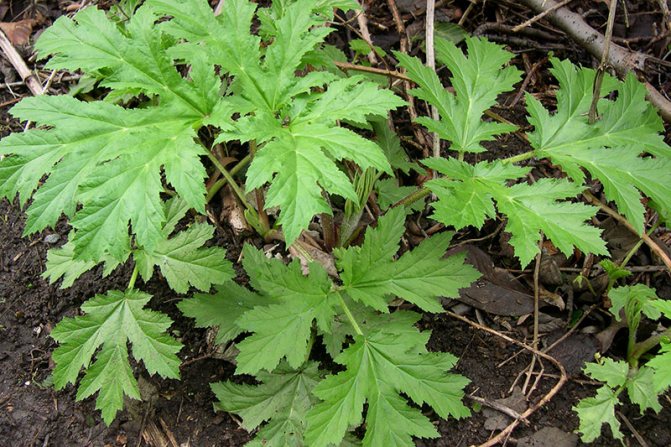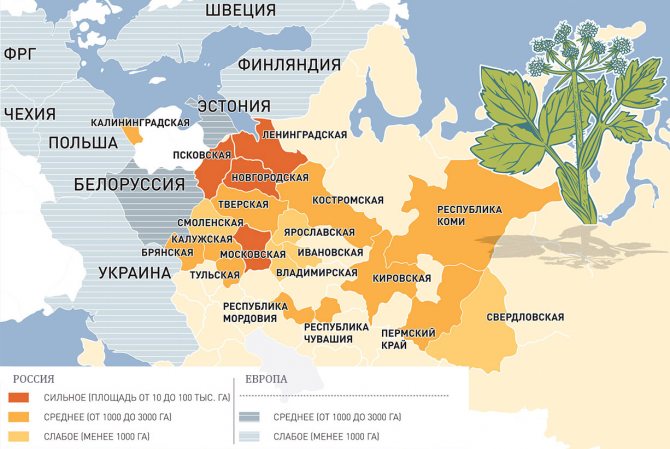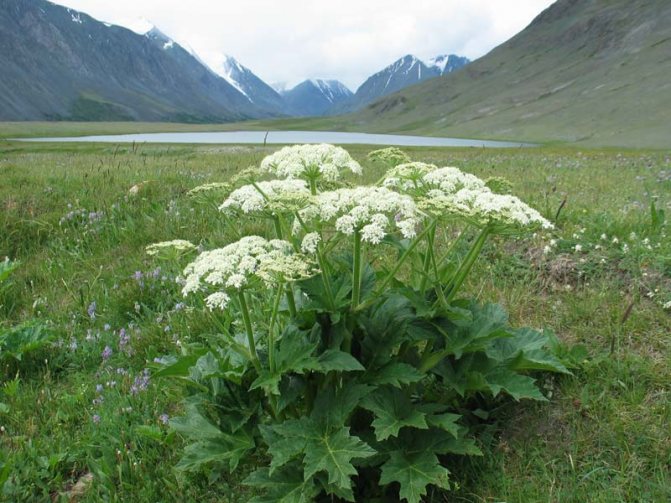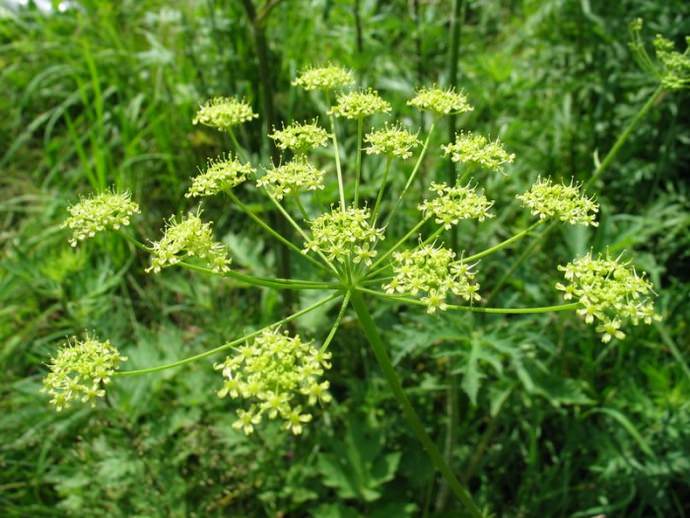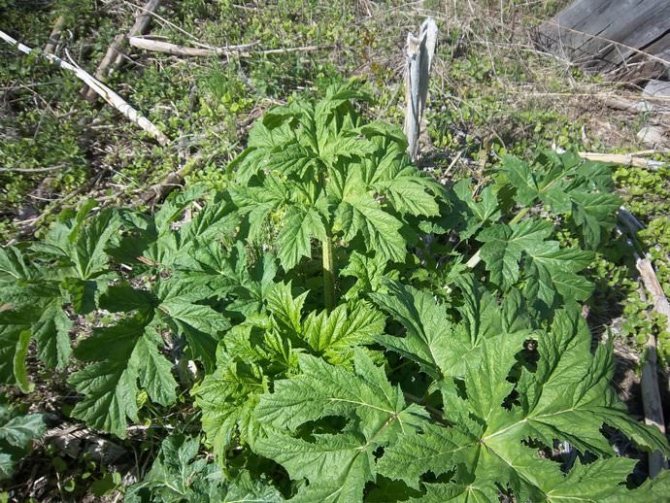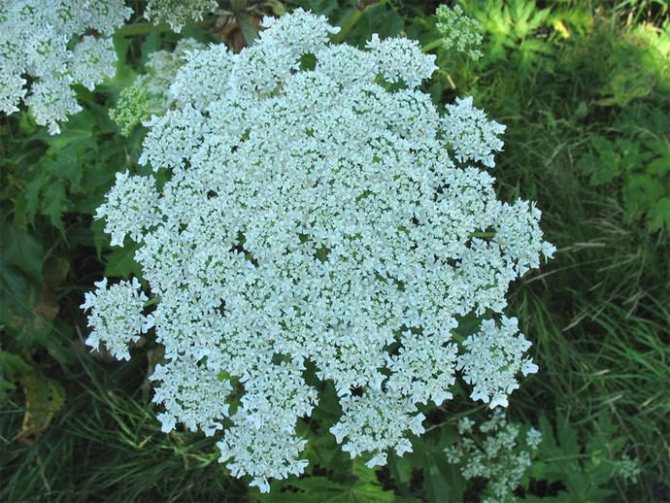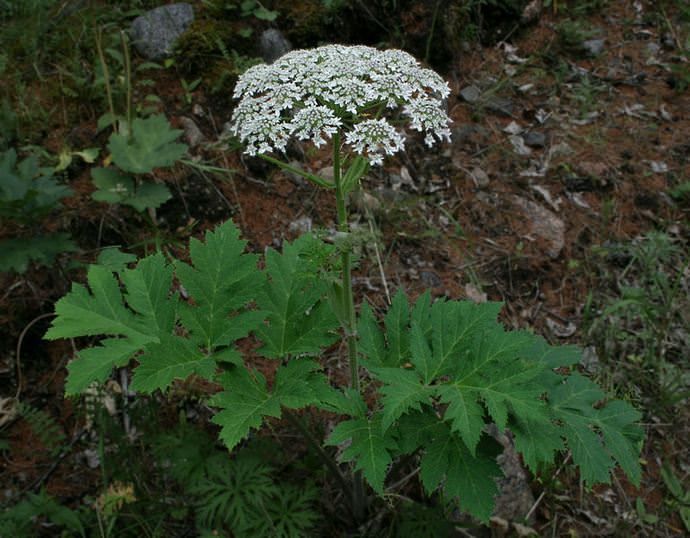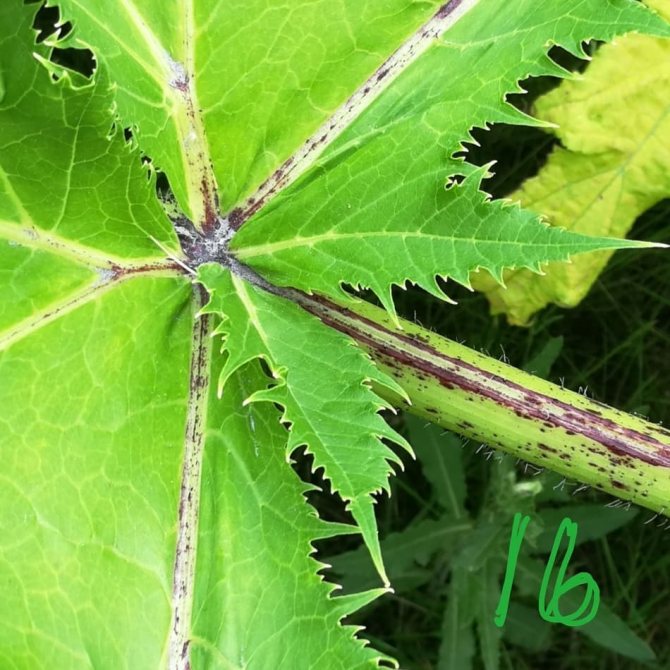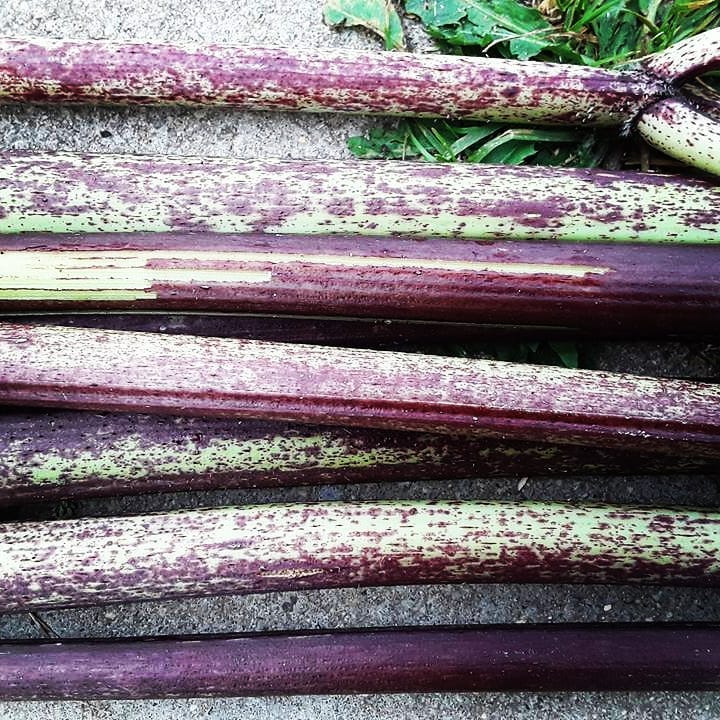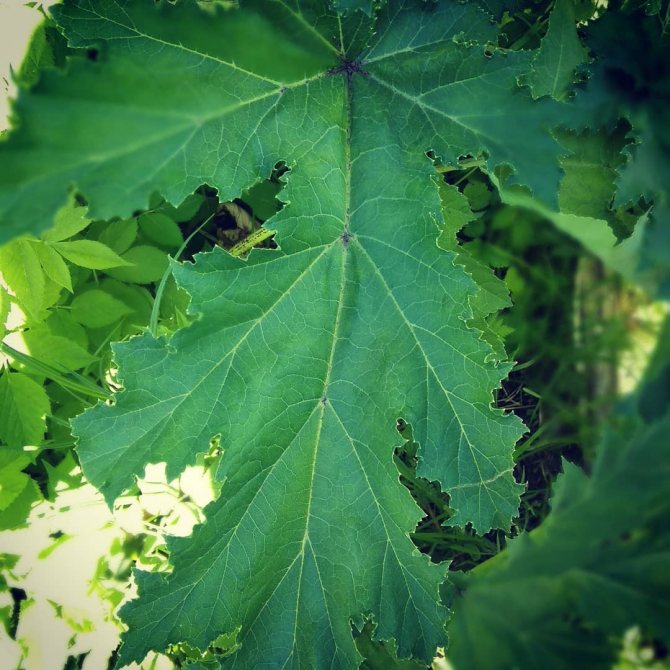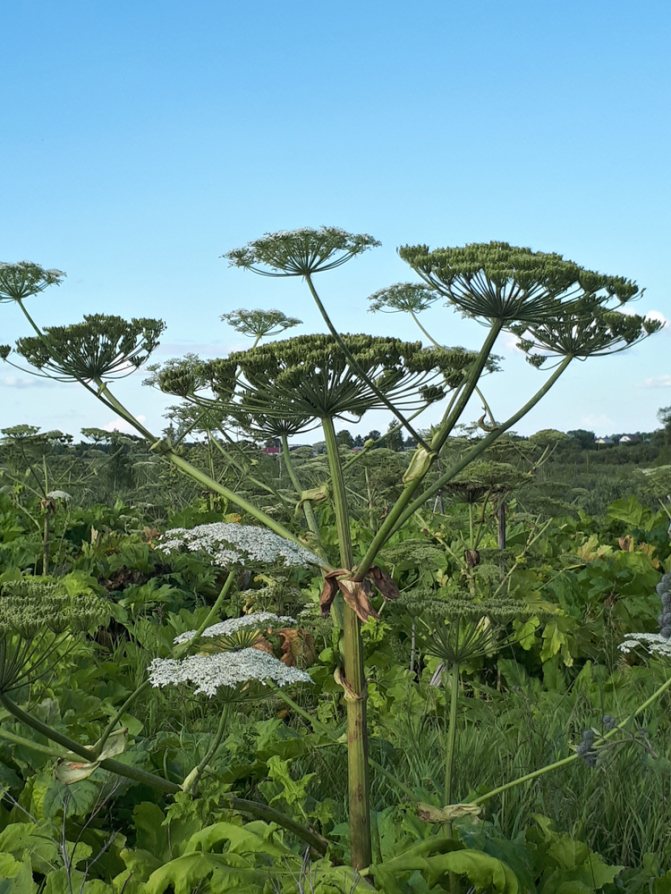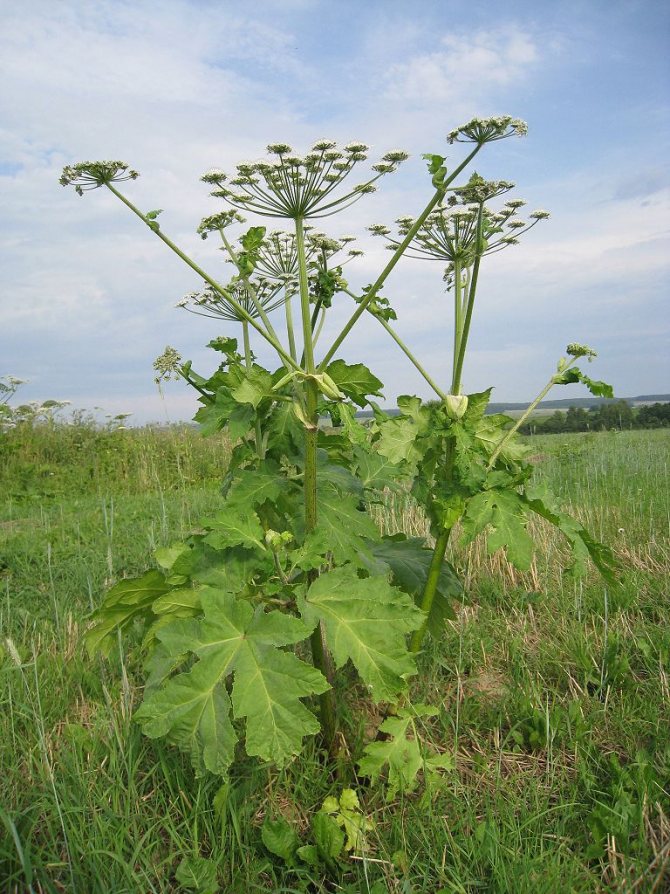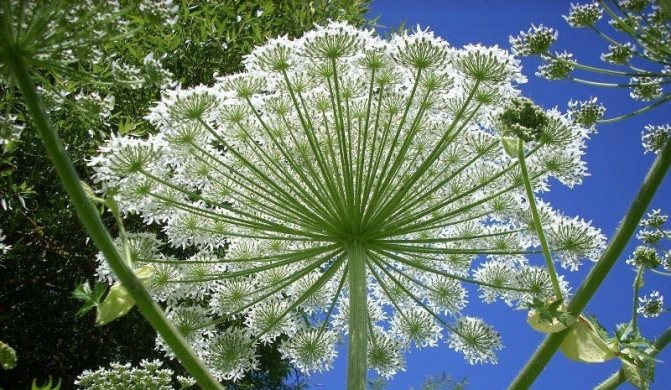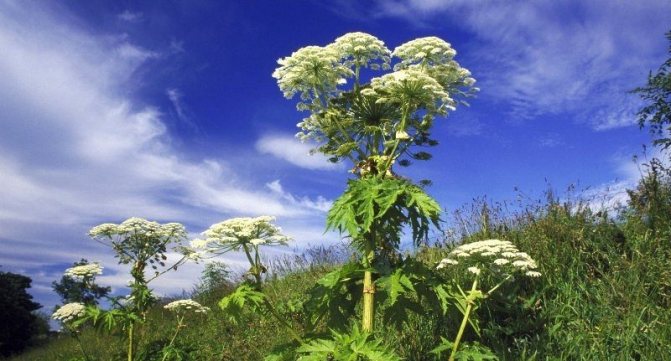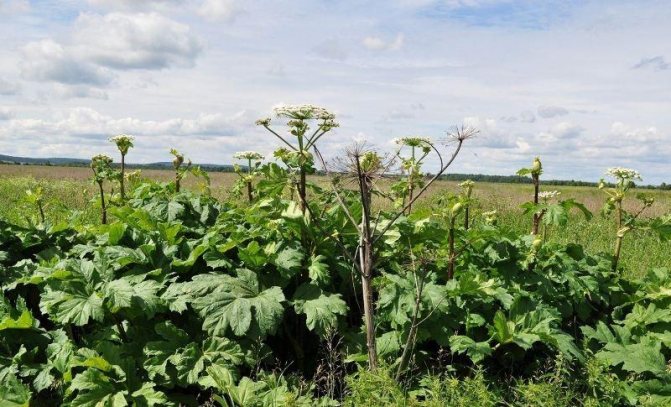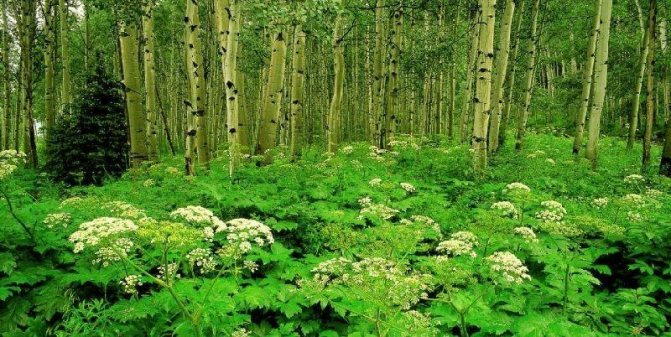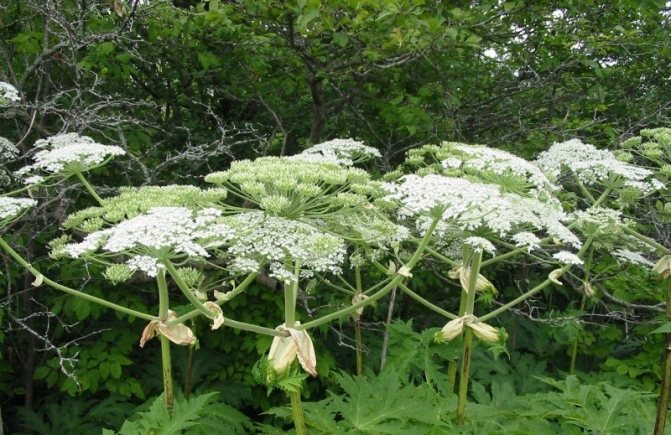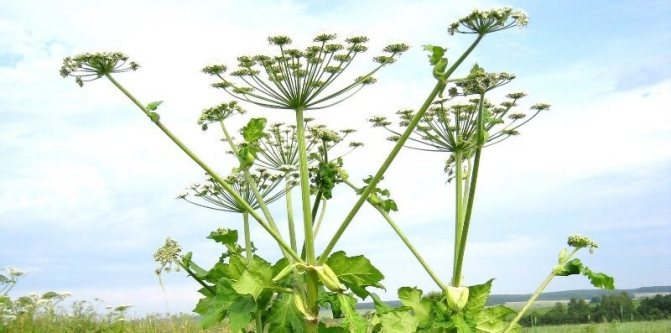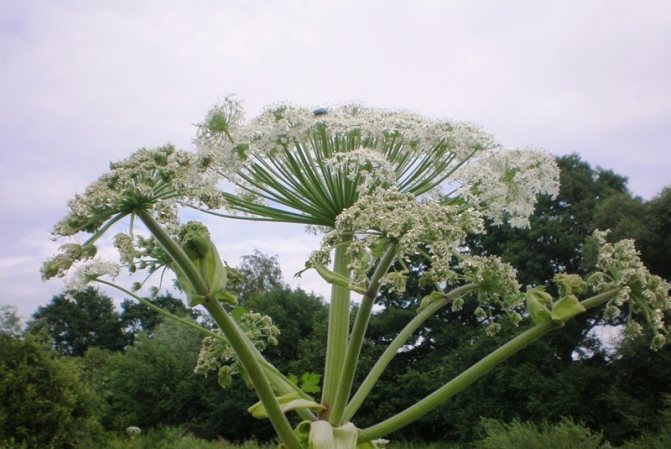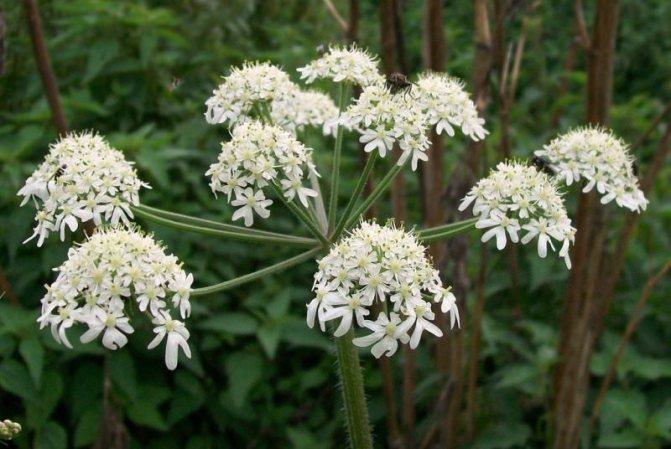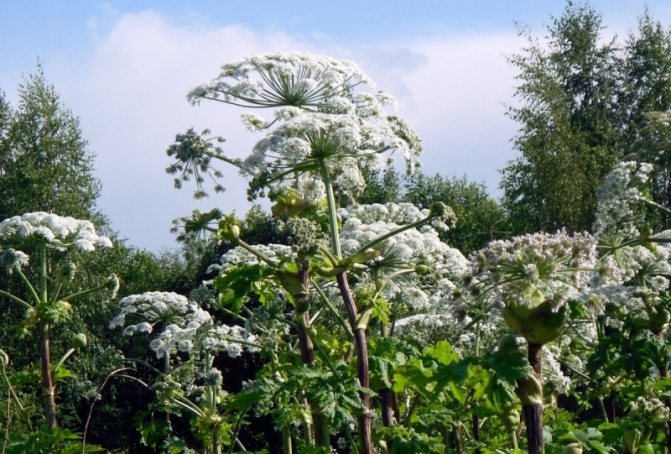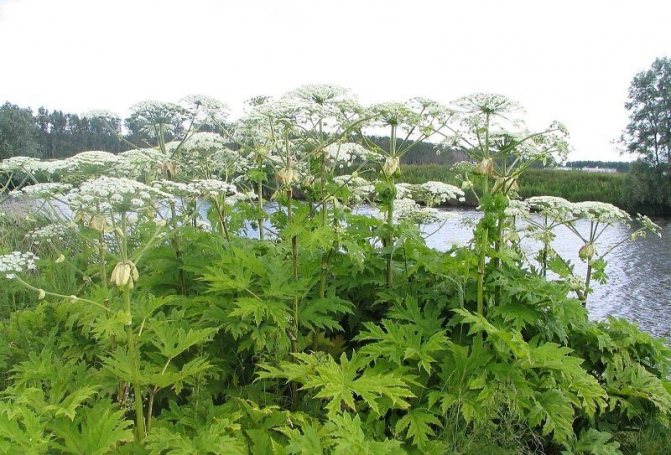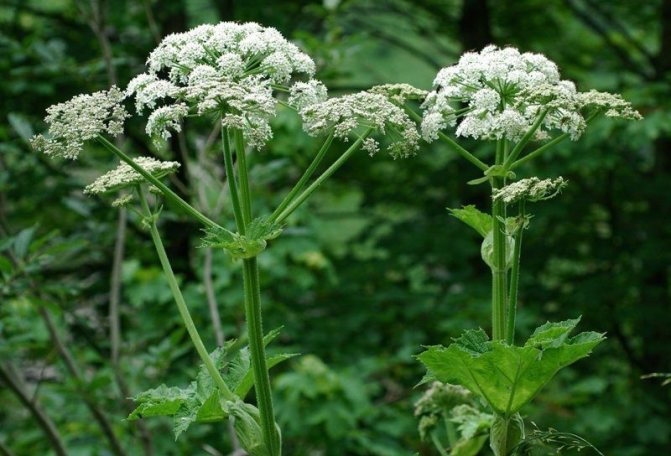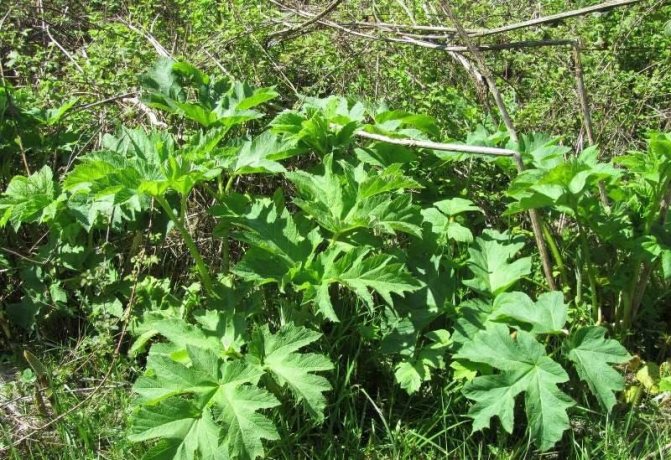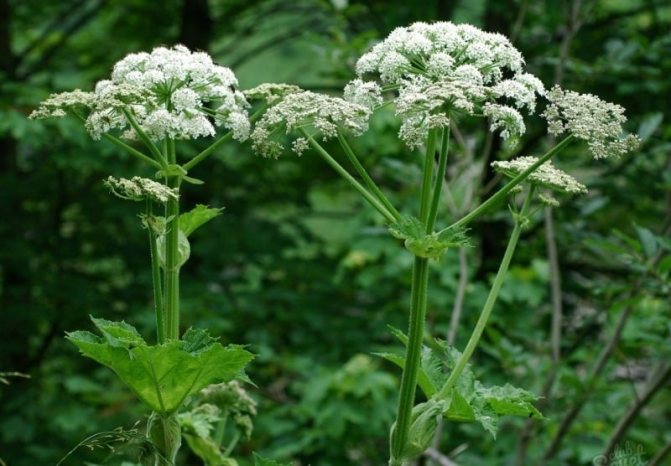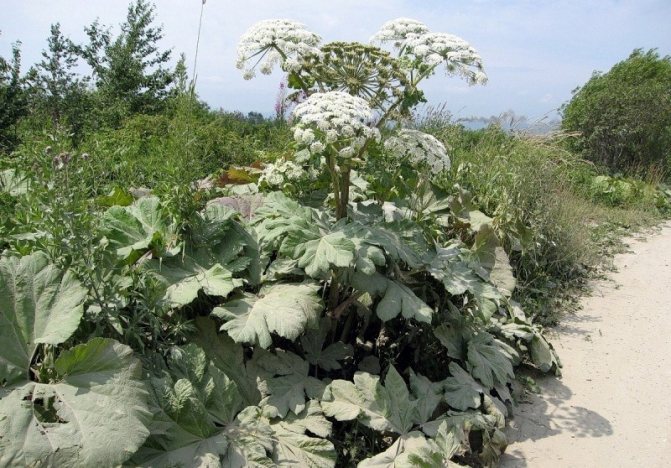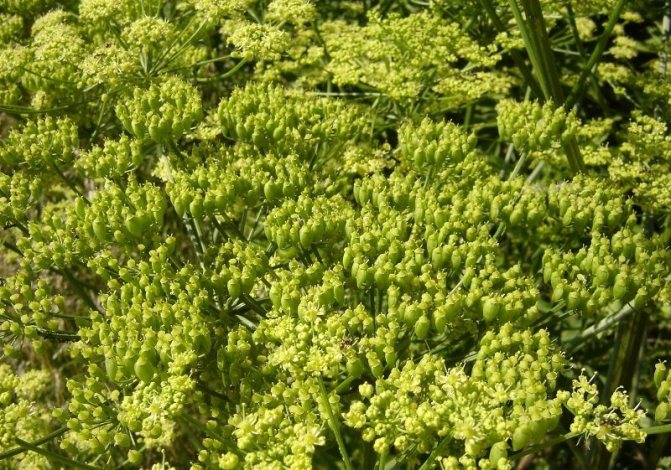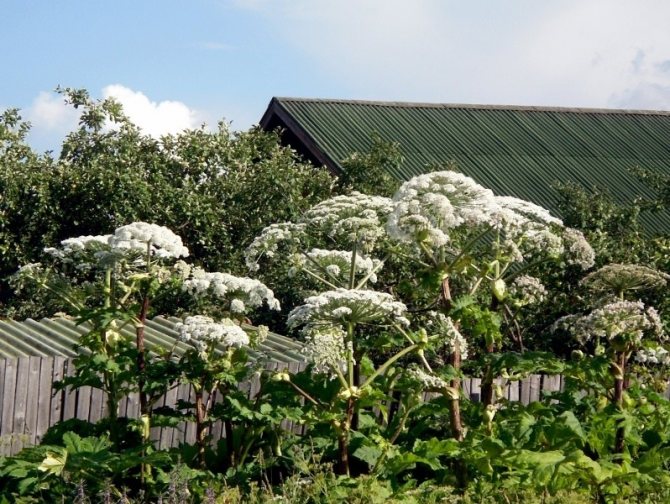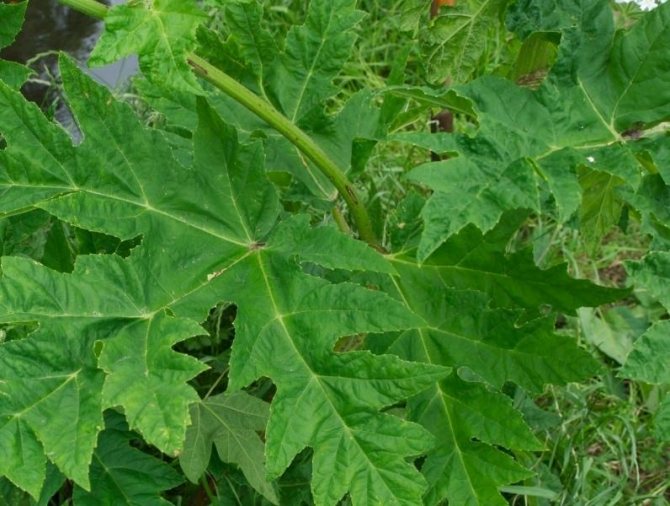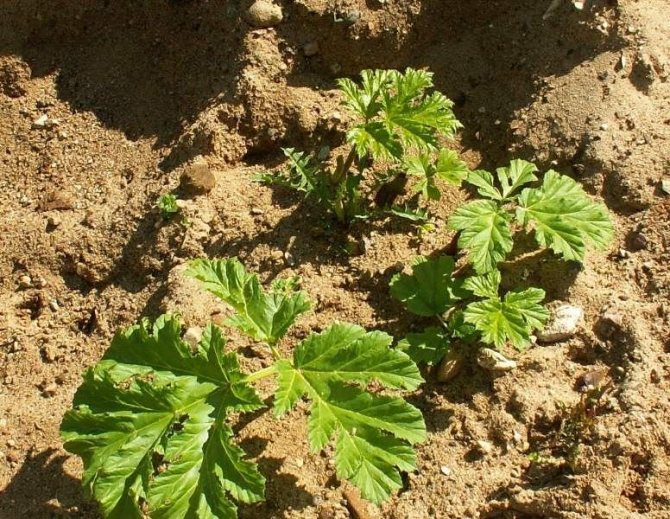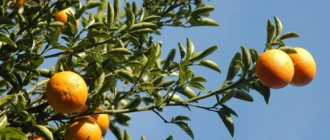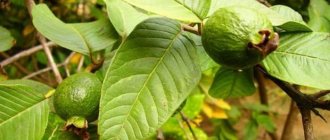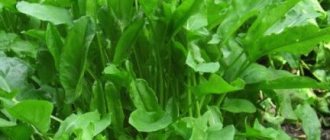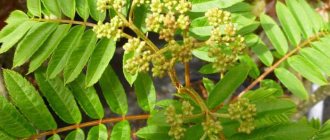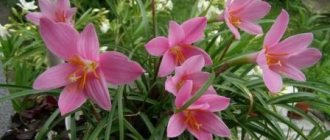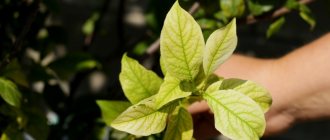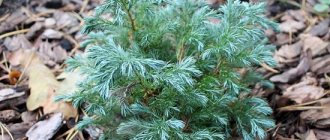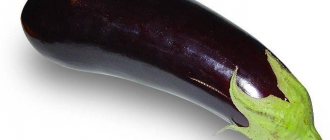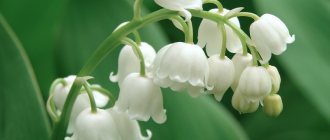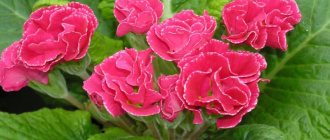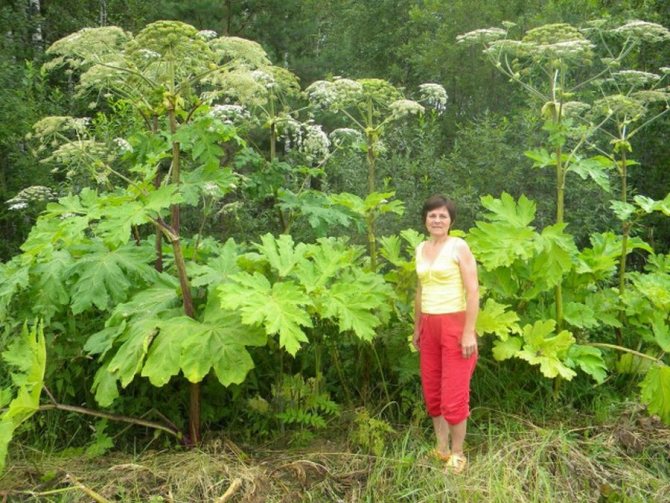
We encounter some things almost every day, they become commonplace and familiar. But it turns out that unexpected and interesting facts are associated with them ...
Just now I read that it turns out that several million people get burns every year as a result of contact with hogweed in Russia. A rare summer goes by without reports of loss of sight or even death of unsuspecting people who have got out into nature. The most terrible photochemical burns that do not pass for several weeks, and even the danger of disrupting the structure of chromosomes, one has only to get the juice of this plant on the skin.
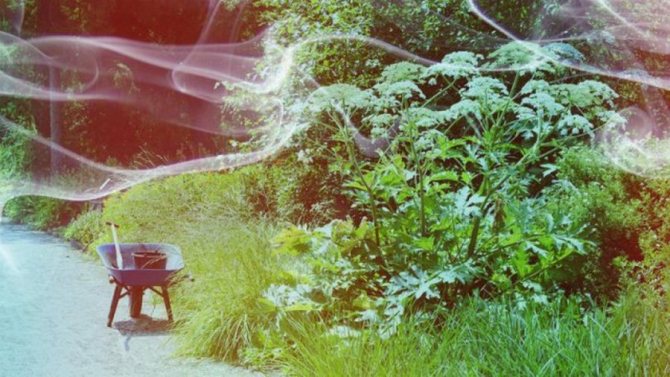

Hogweed are perennial plants from the umbrella family. The hogweed genus has about 70 species, of which 40 are found on the territory of Russia. The plants owe their unusual name to a popular dish, to which some edible species of hogweed were added until potatoes appeared in Russia.
Because of their large size, hogweed are popularly called Hercules grass.
Millions of rubles are allocated to combat it, but this practically does not help, and the cow parsnip is spread throughout the country and neighboring states. This plant is considered one of the most dangerous among those growing in Russia. Many even consider it a biological weapon, grown to fight summer residents.
Now it is difficult to imagine, but thirty years ago, hogweed was a relatively rare plant. Mothers did not have to tell their children how dangerous these huge tall pipes with white caps of flowers at the top are. Summer residents did not spend the lion's share of their time fighting him, and the roads of the western part of Russia did not adorn the huge thickets, as if left after the filming of a fantastic film.
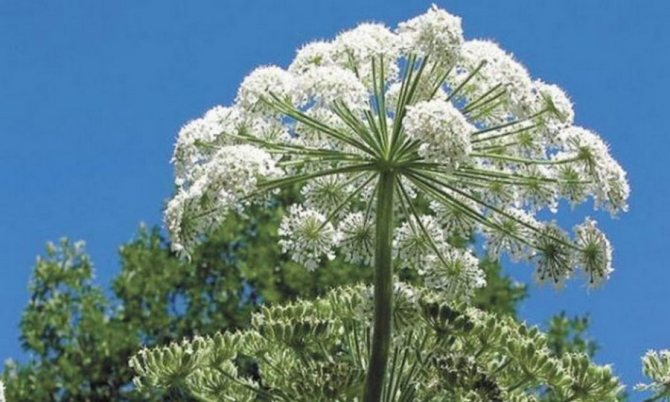

It grew by itself
It's worth making a reservation right away. Alas, all theories about "alien" origin or artificial creation as weapons have no real basis. The hogweed has existed on our planet for millions of years. One of the species, the Siberian hogweed, has been known to the inhabitants of Russia for several centuries, and the first mention of it under the name "hogweed" refers to the 16th century.
Then it was called simply borscht and was actively eaten, most often under this name they meant Siberian hogweed. Its young shoots were added to food, but after two hundred years the names were separated. Soup with the addition of beets began to be called borsch, and hogweed remained hogweed.
Despite the name, Siberian hogweed grows almost throughout Russia. It was he or a similar hogweed that we most often used in childhood for the manufacture of the highest quality spitting pipes. Its hollow barrel is ideal for creating "brass weapons". Hogweed juice can cause inflammation on the skin, however, very mild. By the word "hogweed" until the end of the 80s, everyone meant this very plant, which is often found along the forest edges.
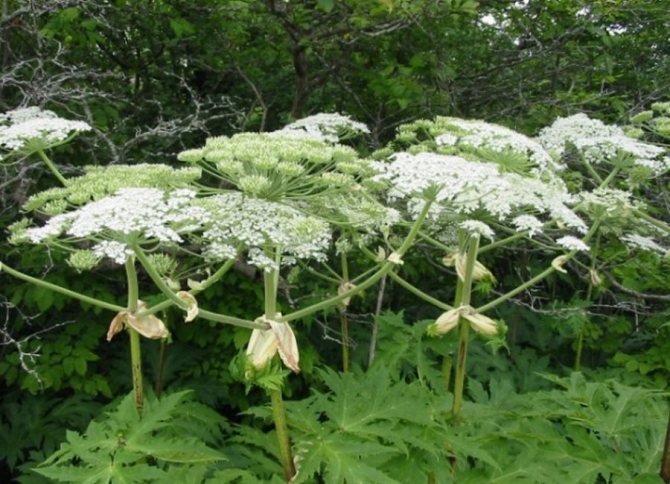

A herb similar to hogweed: properties and uses
Horsetail herb: description, properties and application
There are herbs similar to hogweed, consider a few of the most similar options:
- Sleepy is an edible, healthy and tasty weed used in cooking.Only young greens are used for food, which will perfectly fit into many salads, soups and main dishes;
- Hemlock is a very poisonous plant that is quite common and grows on wastelands, roadsides, forest edges. It differs from a bear's paw in a bluish bloom on the stem and in reddish-purple spots;
- Cicuta is a very large umbrella plant that grows on the shores of lakes, rivers, swamps and other bodies of water. The most dangerous part of the plant is the root system. When the poison of a plant enters the human body, severe poisoning occurs, and after a very short period of time;
- Angelica or angelica is very similar to hogweed. But, angelica is an absolutely safe plant. In order to distinguish between these two species, it is necessary to look at the stem - in the angelica it is smooth, but in the hogweed it is covered with fine hairs.
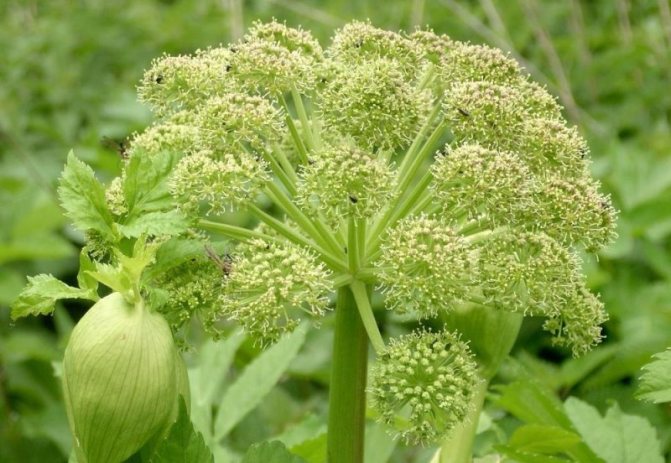

Dudnik herb
Horror from the Caucasus
In 1944, botanists of the Soviet Union reached the foothills of the Caucasus. It was there that a new species of hogweed was discovered by Ida Panovna Mandenova, a Soviet and Georgian botanist-taxonomist. A new plant, not yet known to scientists, was described and systematized. The famous botanist Dmitry Ivanovich Sosnovsky is not at all to blame for our current situation. The plant just found was named in his honor - Sosnovsky's hogweed (Heracléum sosnówskyi). Sosnovsky himself studied the nature of the Caucasus, described many new asters and was a serious specialist in the cultivation of grapes.
And there is also a version that Sosnovsky's Hogweed is an artificially bred species. His wild ancestors were found in the mountainous regions of Armenia. The plants were large in size compared to their Central Russian and Siberian relatives, and also formed a large green mass. In the 40s. In the twentieth century, this species came to the attention of scientists as a promising crop for forage production. The history of the origin of the new species is shrouded in mystery. It is only known that after the nth number of years of research, in the laboratory of a certain Caucasian Research Institute, whose name is not even mentioned anywhere, scientists whose names also remain a mystery, a miracle plant was born - Sosnovsky's hogweed, a plant that was considered a hope for a solution problems of fodder production in the USSR.
By the way, in Latin, the whole genus of hogweed, these plants of the umbrella family, has a name (Herácléum) in honor of the hero of ancient Greek myths - Hercules. This name was given to him by the Swedish scientist Karl Linnaeus back in the 17th century for its rapid growth and tall and strong stems. If the scientist knew about Sosnovsky's cow parsnip, easily reaching up to three meters in height, then it is not known what name he would have come up with.
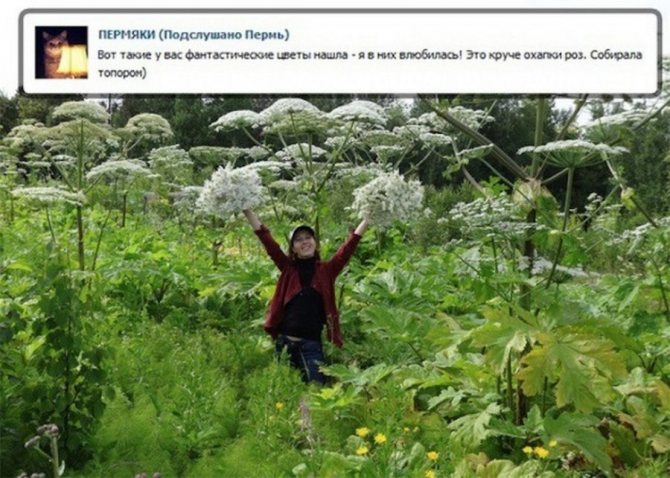

Varieties of the hogweed plant
Russia always surprises with its diverse number of plant species. The hogweed also did not stand aside and exists as a dangerous species for humans and safe. Perennial crops inhabiting vast territories.
Dangerous species:
- Wild;
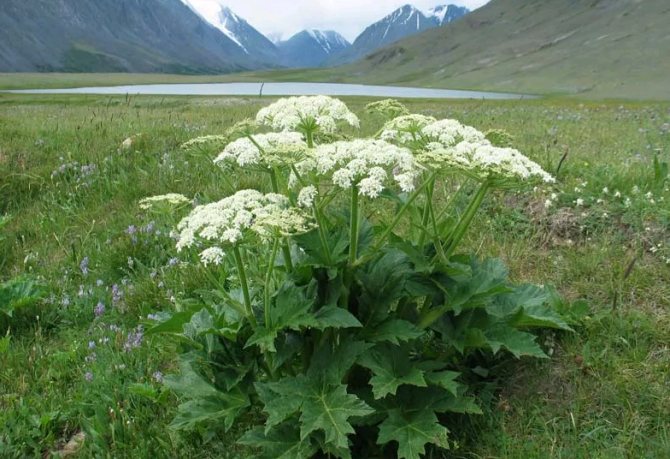

- Sosnovsky and Mantegatsii are the largest representatives of the umbrella family and the most dangerous of all species, imported from the Caucasus.
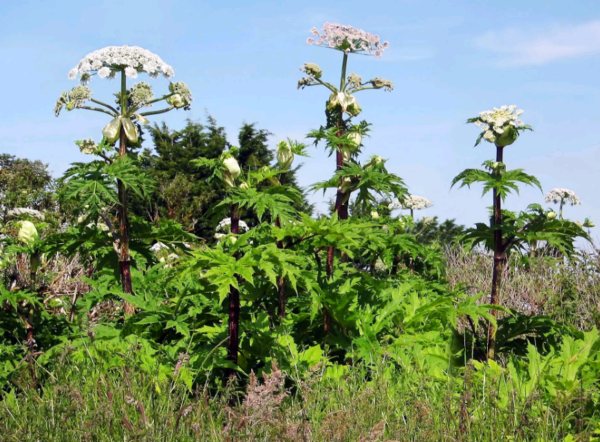

They are very difficult to destroy.
Harmless varieties of a poisonous plant:
- Shaggy;
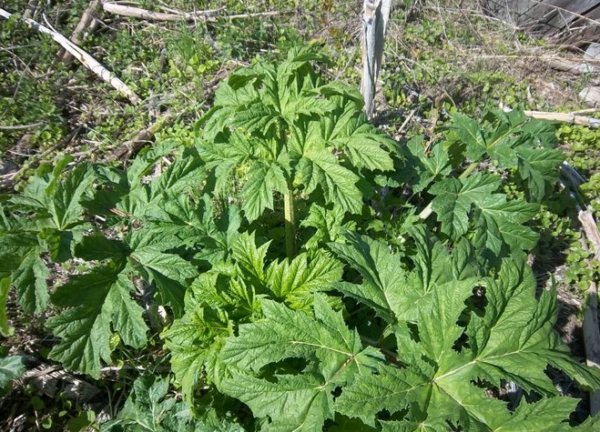

- Siberian;
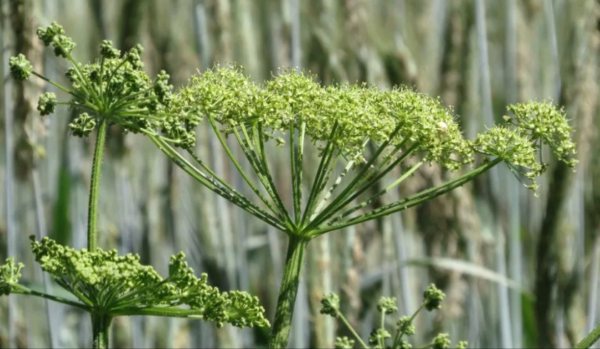

- Dissected.
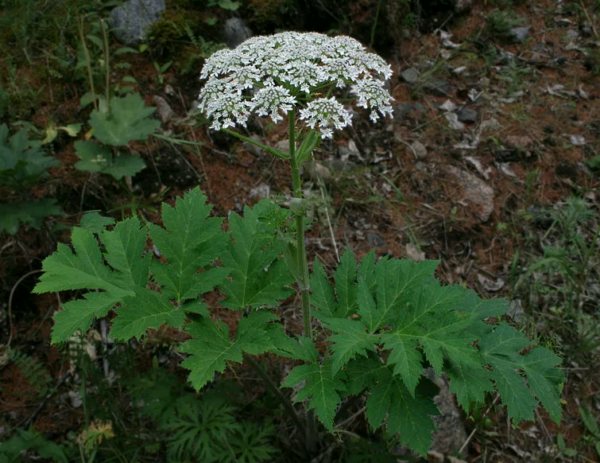

You can distinguish a poisonous plant from a harmless one by flowers and size.
Dead food
Initially, the plant seemed fabulously promising: its height reaches 4 meters, the diameter of the stem at the root collar is 10 cm, the accumulation of green mass is simply incredible. It calmly tolerates frosts down to -5 C, which is very important for the northern regions of the country. Possesses colossal seed productivity, up to 50,000 seeds are formed on one plant. In the early stages, hogweed grow slowly, but by the middle of summer, they reach 1.5 m in height. The crops of Sosnovsky's hogweed are not affected by insect pests.In addition, the seeds contain active substances that inhibit the development of seeds of other plants when they enter the soil, which reduces energy and resource consumption for combating weeds and pests. Quickly restores the above-ground part after mowing. In the second or third years of life, it gives a huge amount of green mass.
In addition, it was supposed to use Sosnovsky's hogweed as a fence along the edges of roads and pastures. The plant bears fruit only once in its life, for 3-4 years, after which it dies.
It seemed, what else could you want ?! At the same time, one strange circumstance was discovered: none of the scientists until the 60s of the twentieth century, in their works, mentions the shortcomings of the hogweed. More than one dissertation was written on this culture, and the disadvantages of the fabulous plant were revealed only after the start of its massive introduction into crop rotations of farms throughout the country.
But let's not get ahead of ourselves.
After the Sosnovsky hogweed came to the attention of scientists, it was decided to cultivate it as a silage plant - for livestock feed. Silage is a way of harvesting succulent feed for cows. The crushed grass is placed in special towers without air access, where it is reheated and can be stored for several years. Thus, even in winter, cows can receive tasty and healthy feed. Almost like grass from a pasture. Naturally, silage harvesting requires succulent and easily gaining weight plants.
At the end of the 40s, breeder Pyotr Vavilov (the academician's namesake) from the Institute of Biology of the Komi ASSR convinced the leadership of the Lenin All-Union Academy of Agricultural Sciences (VASKhNIL) that hogweed, a source of cheap and effective silage for feeding livestock, would help restore the agriculture destroyed by the war.
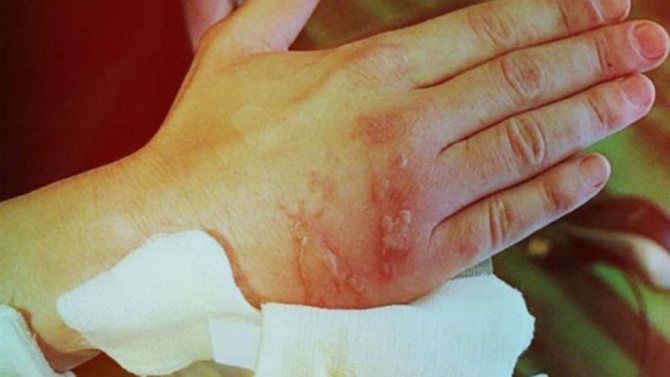

Alas, after a few years it became clear that the hogweed feed turned out to be extremely bad. The cows ate it under a stick, preferring other plants, milk after the cow parsnip diet turned out to be bitter to such an extent that it was impossible to consume it. In addition, hogweed influenced the reproductive system: more and more freak calves were born, cows became infertile.
Almost immediately they stopped growing the hogweed as feed, but it was too late: the poisonous genie had already flown out of its bottle.
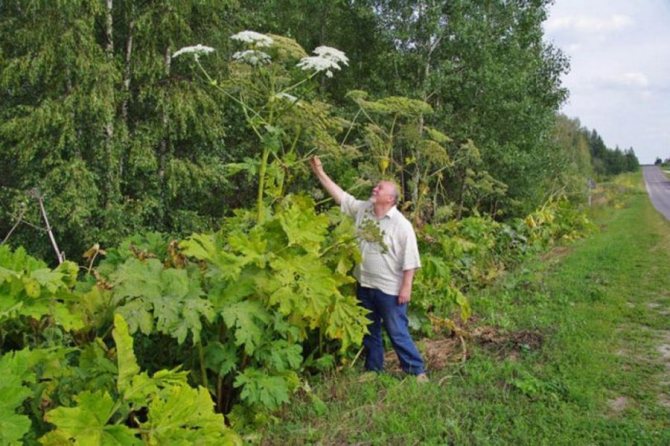

How to deal with a poisonous plant
The hogweed grows very quickly. Of course, no one would want to meet poisonous grass in the garden or vegetable garden. There are several methods of weed control. It is necessary to choose a method more suitable for certain conditions and act exactly on the proposed system:
- Pruning buds that have not yet blossomed is the most viable option in a small area. In the process of trimming, you need to observe precautions, or rather, wear protective glasses, thick gloves and a medical mask;
- Burning off the aerial cover is a method suitable only for the ripening period of the seeds. In the process of work, you must use a respirator and wear protective clothing;
- Treatment with a special agent that destroys weeds throughout the cultivated area;
- The hogweed moth is a parasite that can cause significant damage to the hogweed. But it is worth noting that harm will be caused not only to weeds, but also to garden crops.
The cow parsnip is a large herb that can be divided into many varieties. Among the species, there are both poisonous and useful plants. Therefore, you should be very careful about the description of the characteristics of this plant, so as not to get burns when in contact with grass.
Pandora's Box
Since about the end of the 80s, when the fields begin to overgrow with grass, the cow parsnip begins its triumphant march along the roads and glades of the country.The seed productivity of the central umbrella of the cow parsnip per one generative shoot is from 2500 to 3500 seeds (and inflorescences per individual are from 1 to 5, rarely up to 11), that is, a total of about 20–35 thousand seeds is produced annually by one plant. Sosnovsky's hogweed sharply ran wild and began to dominate the local species with great speed, which were completely unaccustomed to this.
And if in the forest or in the fields he has almost no chance to break through the defenses of the local flora, then in the recently plowed fields, which were cultivated, the abandoned farms of the cow parsnip Sosnovsky expanse. Plants reaching three meters in height simply prevail over the environment, not giving other species a single opportunity. Plants actively occupy the shores of reservoirs, wastelands, and right-of-way roads. According to some reports, at present, only on the territory of the European part of Russia, the Sosnovsky hogweed occupies more than a million hectares.
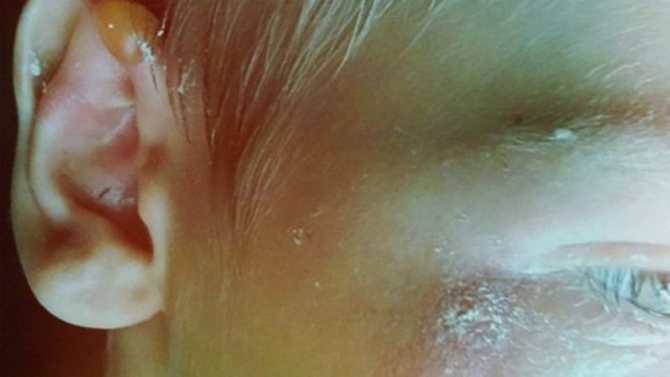

Currently, the hogweed is well distributed almost throughout the western part of Russia. Every year it goes further and further - to the south and east. There is Sosnovsky's hogweed beyond the Urals, they began to fight against him in Tatarstan. Seeds are most often transported on the wheels of cars, along with the wind. As a result, the speed of propagation is enormous. In the Leningrad Region there are already very few districts where vacant lots are not occupied by hogweed.
And, it would seem, what's wrong with the huge and almost unearthly thickets? The thing is that cow parsnip is not only an ideal weed that grows over and over in your garden. It is also very dangerous for humans.
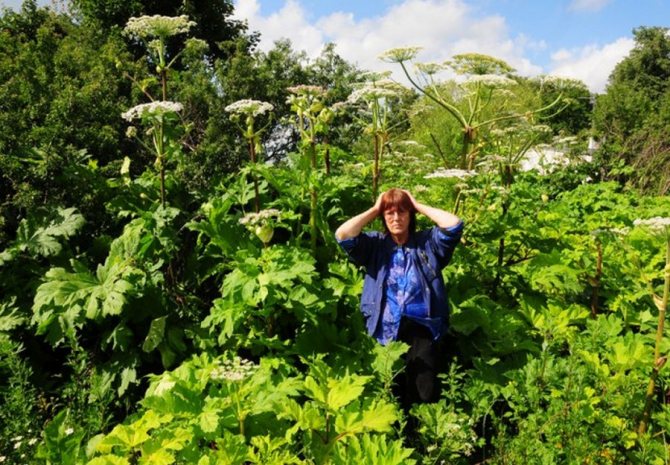

Popular talks
- Report on the Roundworms grade 7
Roundworms (or in other words nematodes) are worms with a primary body cavity that live in water bodies and soil. Most roundworm species are parasitic, so their body size is relatively small, - Report on the topic Flute (musical instrument, history) message
The flute is an ancient wind instrument that produces a beautiful harmonious melody that can surprise anyone. At first, the flute was made of wood, but in the future, silver will replace the wood. In the 19th century, it was enough - Report-message Parts of the thermometer
A thermometer or thermometer has simply become irreplaceable for humanity, since it is very convenient and easy to determine the temperature not only of the body, but also outside the window, in the water and in other places. A fairly large number of them have appeared in our time.
Super fast tan
For those who have not yet encountered Sosnovsky's hogweed, we recommend that you read this as carefully as possible. Every year tens of thousands of people are treated with chemical burns resulting from contact with hogweed. Thousands of people end up in hospitals, for some, meeting with this plant ends in death.
The thing is that cow parsnip is phototoxic. The clear watery sap of hogweed contains light-sensitive substances from the furanocoumarin group. Under the influence of ultraviolet radiation, they transform into an active form that can cause skin damage. After contact with the plant - especially on sunny days - severe first-degree burns may appear on the skin. A special danger lies in the fact that touching the plant for the first time does not cause any unpleasant sensations.
Moreover, if the juice is exposed through clothing, such as socks, blisters may appear later, for example, when you take off your clothes in the evening. Moreover, room light is enough to activate. Blisters filled with liquid from contact with hogweed juice take a very long time, they are painful and do not heal well.


Roughly speaking, the sap of the plant deprives human skin cells of protection from ultraviolet radiation. And the skin burns out even on a cloudy day in a matter of minutes. And this is not just redness, but a serious photochemical burn. Death occurs when 80 percent of the body or more is affected.
Hogweed juice in contact with the eyes can lead to blindness.There have been cases of loss of sight by children who played with hollow plant stems as with telescopes. Moreover, it is not always necessary to contact the plant sap in order to get a burn. Often it is enough just to touch the leaves of the Sosnovsky hogweed. At risk are children and townspeople who have come to rest in nature and do not know what kind of plant it is. There are hundreds of horror stories of how cow parsnip leaves were used to line the floor of a tent, stick them on the nose to prevent sunburn, and even use them instead of toilet paper.
Moreover, cow parsnip is dangerous not only for burns. Sosnovsky hogweed juice has some pathogenic properties even in the absence of photoactivation (even if there was no burn). Thus, it was found that the juice is capable of causing gross violations of the structure of chromosomes - chromosomal aberrations. This occurs mainly through damage to the fission spindle (aneogenous effect). In other words, Sosnovsky's hogweed juice causes a mutagenic effect. In addition, it was recorded that the juice inhibits cell division (mitosis), that is, it exhibits mitosuppressive activity.
It is precisely this property that did not allow the cows to enjoy the hogweed silage. Rather, they ate silage, and then received a powerful time bomb in the stomach.
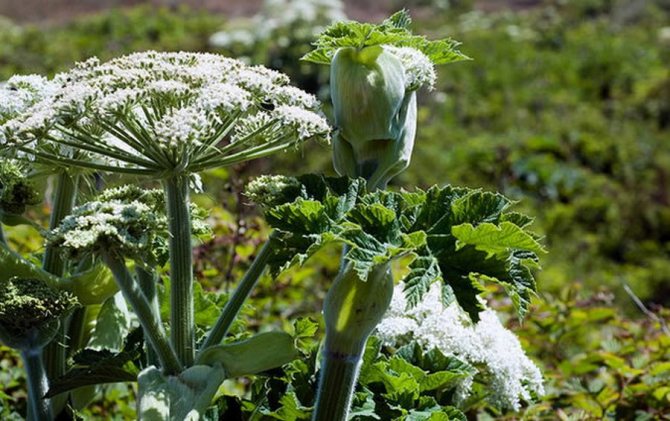

Poisonous action of Sosnovsky hogweed
The sap, pollen, and weed fumes contain volatile furanocoumarin compounds and essential oils. They cause severe allergic reactions, the manifestations of which usually become:
- painful, difficult to heal skin burns with blisters, scars or scars remain in their place, age spots are formed;
- pain in the eyes, inflammatory processes that threaten visual impairment and even blindness;
- photosensitivity - prolonged hypersensitivity to daylight in a part of the body that has been in contact with a weed.
Under the influence of toxic substances, the skin becomes defenseless against the sun's ultraviolet light. It "burns out" quickly - even in cloudy weather! If juice penetrates clothing during the day, photochemical burns may not occur immediately, but later, for example, at night. Moreover, for their appearance, there is enough electric light in the room. If 80% of the skin is affected, there is a risk of death. In addition, the juice of a poisonous plant, causing cell mutation, provokes the development of oncological diseases.
Risk group
What should you do in order not to get yourself an ultra-fast tan in the form of bubbles in all the places where the hogweed juice could reach? To begin with, and if possible, it is worth remembering for yourself and telling the children exactly how the hogweed looks like in order to bypass this plant by the third way.
These are large umbrellas, sometimes just huge (three meters on paper do not look very impressive, in real life they are just giant plants). The leaves of the Sosnovsky hogweed are light green, smooth, up to two meters long. Stem furrowed-ribbed, scabrous, partially fleecy, purple or with purple spots. During flowering, the hogweed throws out umbrella inflorescences with white flowers. By the way, hogweed is an excellent honey plant, which does not excuse this plant in all other cases.
The hogweed is most dangerous during the flowering period. It is at this time that even touching the leaves can lead to burns and blisters. In other periods, the plant sap is the most dangerous, therefore, if you are going to mow the cow parsnip, you should take care of maximum protection.
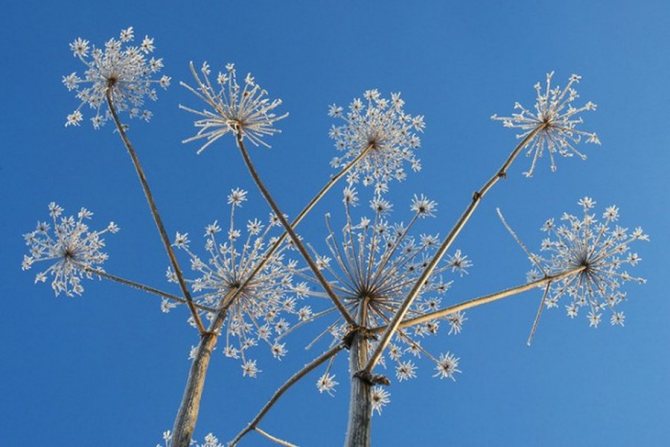

If the hogweed juice does get on the skin, you need to remove this place from the light as soon as possible. Yes, first you need not to run to wash off the juice, but to roll up the affected area. It sounds counterintuitive, but it is. Then you need to thoroughly wash off all the juice that has got on the skin under artificial light with soap and water, and after that, for at least two more days, do not expose this part of the body to the sun.Yes, the juice could already have an effect on the skin cells, and even if it is not left on the surface, the photochemical burn will not be long in coming.
If burns do appear, then it is worth showing them to the doctor, especially if the lesion is large enough. At home, burns are treated:
ointment "Syntomycin";
gel "Lifeguard;
aerosol "Panthenol";
spray "Olazol";
zinc ointment
By and large, these are still burns, therefore, treatment should be appropriate.
Dry hogweed is far from so dangerous. There is no juice in it, and therefore you can safely touch the huge gray dried stems.
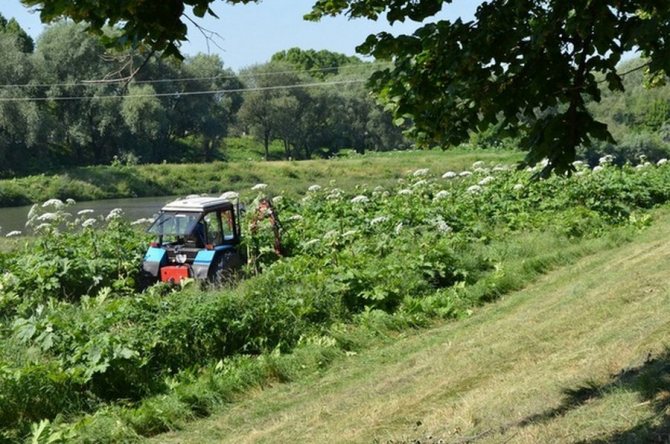

Weed control safety measures
In order not to harm your health, you need to thoroughly prepare for the work on the destruction of the herculean herb. To do this, you should:
- put on trousers made of thick fabric, a jacket with long sleeves, boots or lighter, but closed shoes, a hat, goggles, waterproof gloves;
- take water, soap, anti-burn and antihistamines with you;
- apply sunscreen to brushes and face;
- during work, do not allow contact with plants with open areas of the body;
- after finishing work, do not take items of equipment with bare hands; clothes must be washed, shoes and tools must be washed.
To increase labor productivity, brush cutters, trimmers cannot be used. When using such means of mechanization, poisonous juice will be sprayed on the sides. It is also important to choose the right time to kill the dangerous weed. It is best to do this on cloudy days or after sunset.
What will happen to the homeland and to us
How can you defeat a cow parsnip in the conditions of the whole country? Judging by the current state of agriculture, most likely not. Yes, hogweed can only be spread by seed. On the other hand, the root of a plant can live up to 12 years, even with regular destruction of the stem.
Therefore, there are only two methods of extermination. It is necessary to kill the hogweed before sowing the seeds. This is done either by mowing, and destroying the roots, or with the help of glyphosate. This is a non-selective herbicide, therefore, in the conditions of your site, it is easiest to give injections to the cow parsnip so that the herbicide gets inside the stem (there it gets to the roots). When the cow parsnip is destroyed along the roads, as a rule, it is sprayed, which leads to the death of all living things in this place. However, if the cow parsnip is not completely destroyed, it will be sown very quickly and will again begin its unhurried and silent offensive.
The second method is mowing. Here you need to be as careful as possible, since juicy stems simply sprinkle in all directions when destroyed. Therefore, without a full chemical protection suit, you should not even meddle in these thickets.
There is only one problem: this must be done clearly and systematically, carefully destroying all plants, including the smallest ones. Otherwise, after sowing the seeds, you can start all over again. Therefore, millions of rubles allocated for the extermination of hogweed are wasted. If in one year there is a program, then in another year there were not enough funds for it. This is how the cow parsnip does not go anywhere.
In Belarus, the fight against hogweed is much more thorough. The president personally punishes the collective farms, where they are half-heartedly fighting him or not paying attention. Until we do this seriously, at the state level, as a large federal program, there will be no sense.
There is little hope for the creation of a selective herbicide that would destroy only hogweed and be harmless to other plants. They are now trying to create it in several scientific centers at once, but so far no news has been heard about the production of a medicine against Sosnovsky's cow parsnip. So Russia is slowly overgrown with huge poisonous pipes, and nothing can be done.
+ 0
+ 0
+ 0
+ 0
+ 0
Where is hogweed used
For therapeutic purposes, the poisonous plant is used as a medicinal plant in the treatment of skin diseases and to restore the human nervous system.
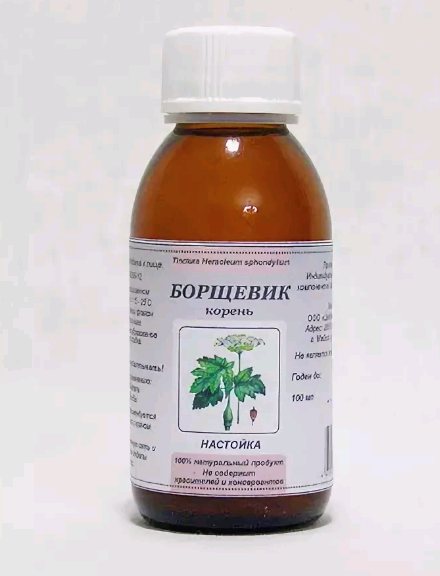

Medicinal infusions are used to improve appetite and restore the digestive system. To get rid of scabies, make trays of hogweed leaves. However, you need to be careful when using hogweed for medicinal purposes. There is a chance of getting harmful effects from this plant, instead of medicinal.
Dream cutlets
- 500 g of snow
- 100 g white bread
- 200 g boiled potatoes
- 2 raw eggs
- 2 tbsp butter
- 3 tbsp bread crumbs
- Salt
- Pepper
- Greens
Step 1. Rinse young leaves of the dream in hot water and mince.
Step 2. Also pass potatoes and white bread through a meat grinder. Mix all.
Step 3. Add eggs and finely chopped herbs. Mix. Season with salt and pepper.
Step 4. Stick cutlets and roll in breadcrumbs.
Step 5. Fry in butter, serve with sour cream.
Advantages and disadvantages
The struggle is becoming widespread. Already many gardeners have personally seen what a hogweed looks like, but not everyone knows how to distinguish a hogweed from other weeds and what are its strengths and weaknesses.
These plants are monoecious, i.e. have both male and female flowers. Their bloom continues once in a lifetime. It is quickly removed from the soil so that the seeds do not remain in the garden.
Strengths:
- grows until it gives seeds;
- seeds ripen in the amount of 20 to 70 thousand per bush. They retain their germination capacity from 5 to 15 years;
- the surface of the seeds is covered with essential substances, which, getting into the soil, destroy the roots of neighboring crops.
There is another feature of them - they can be carried over 2 km by the wind, birds, animals, they stick to car wheels.
As a rule, they can spread up to 4 km and beyond. The fallen ones can be carried over the water or after the umbrellas are ripe.
Plants also have weaknesses:
- After the seeds have bloomed and ripened, it is time for the weed to die.
- The core root system does not mean vegetative reproduction. If you cut off the top of the stem, you can wake up the fallen asleep buds.
- May die from high soil moisture.
- Dense earth will not allow planting material to germinate if it gets 25-30 cm deep.
- Siberian, Sosnovsky and other varieties need a lot of sunlight.
The fight against hogweed begins taking into account its strengths and weaknesses. If you know the nuances, it will be easier to fight. The hogweed can be removed if done carefully, taking into account personal protective measures.
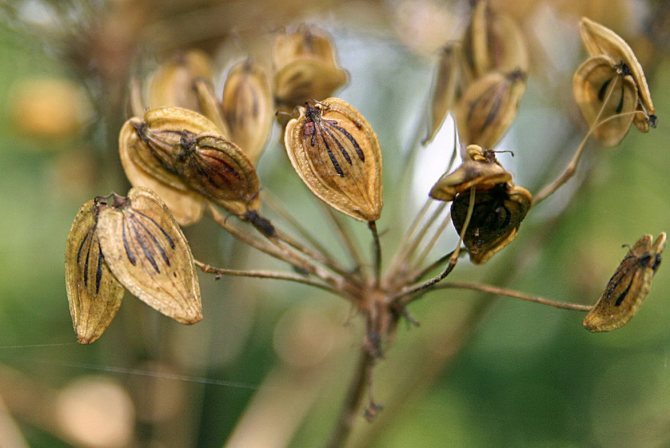

Hogweed seeds
Country hogweed soup
Important! Before collecting the hogweed, make sure that you are looking at the edible species, and not the dangerous Sosnovsky hogweed.
10 servings
- 300 g Siberian hogweed
- 200 g young nettle leaves
- 200 g young burdock leaves (optional)
- 100 g young rhubarb (optional)
- 3-4 potatoes
- 2 carrots
- 2 onions
- 1 can of stew
- Odorless vegetable oil
- Salt and black pepper
Step 1. Collect greens in the garden and behind it, remove excess stems, sort out, wash. Chop coarsely.
Step 2. Peel the potatoes and cut into large wedges. Pour ½ a pot of water, toss in the potatoes, cover and cook until half cooked.
Step 3. Finely chop the onion, grate the carrots.
Step 4. Fry the onions in vegetable oil first, then add the carrots, bring until soft. Add stew
Step 5. Put the roast, along with it, put the coarse leaves of burdocks. Bring to a boil, put hogweed and nettle, salt and pepper.
Step 6. Turn off, close the lid and let stand for 15 minutes. Serve with sour cream and hard boiled egg.
To dream
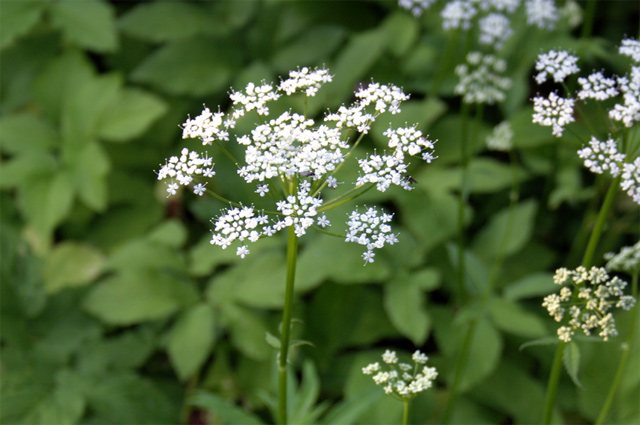

Photo: wikipedia.org/ Tauno Erik
This is not a hogweed, but these plants are often confused, since it seems to bloom with white umbrellas. It is a weed that reproduces well. It is also edible and quite useful.Leaves and stems are suitable for soups, salads. Dream juice helps with rheumatism, heals wounds. And sleepiness - taken internally, protects against vitamin deficiency, increases immunity, helps the kidneys and liver. Glum is used to treat anemia.
Safe views
Safe varieties of hogweed are usually smaller, their stems are not so hard, and the leaves are not particularly massive. Some of them are found on the territory of Russia.
The conditionally safe includes Mokhnaty hogweed, which grows mainly in the Caucasus, as well as in the Crimea. The plant rarely grows above one and a half meters and blooms with not too large, whitish-gray flowers, collected in bunches.
The dissected hogweed also does not differ in particular poisonousness. It grows in the steppes and forest-steppes, but most of all it loves the banks of the rivers. It is found in Siberia and differs from other subspecies in very large, noticeable flowers.
Siberian hogweed is considered not poisonous, growing practically throughout Russia. Unlike its other counterparts, it blooms not white, but light green, sometimes yellowish flowers. Its fruits are shaped like eggs.
Medicinal properties
The harmless Siberian hogweed is often used in folk medicine as an effective drug. Effective infusions and decoctions are prepared from its roots and leaves. Ingestion helps to get rid of kidney and gallbladder diseases, seizures in epilepsy. Decoctions of roots are used to combat lymphadenitis, tumors of the female genital organs, bronchial asthma and hepatitis. Baths and compresses are effective for skin diseases, rheumatism or scabies.
Official medicine has not yet adopted this plant, but research is being carried out and some doctors recommend combining traditional treatment with folk. It should be remembered that the components of the plant are strong allergens. In order not to harm your own health, you should consult a doctor before use.
Gallery: hogweed (25 photos)
| Print Press Print or CTRL + P to print the page | 4.8333333333333 Rating 4.83 (3 Votes) |
Fighting hogweed thickets on the site
There are several ways to deal with dense thickets of grass on the site.
- Mow regularly at the root, which will lead to depletion of the root system and the disappearance of the weed.
- Mow the hogweed and mulch the entire area with dense material, on top of which to pour soil and plant it with cereals.
- Apply herbicides, for example, "Antikiller".
- Dig up the plant.
- Breeding hogweed moth, which destroys this particular herb.
The most effective way to get rid of the weed is by digging it up.
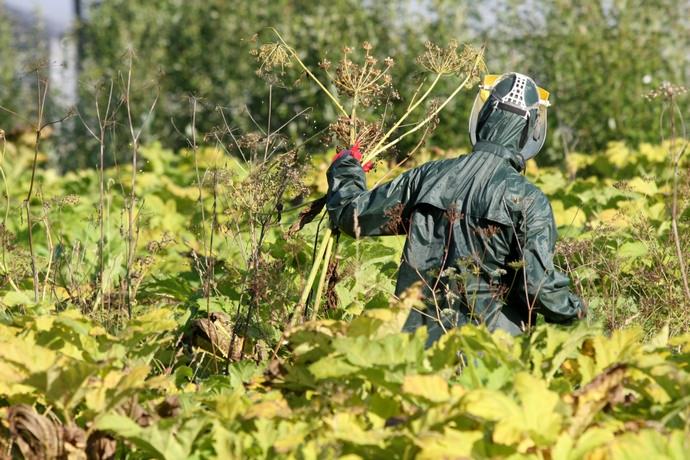

Burn with hogweed treatment at home
When the plant sap comes into contact with the skin, severe itching, irritation, fever and headache appear. Very often there are burns that turn into ulcers, which take a long time to heal and leave severe scars.
To avoid such serious consequences, the place where the hogweed juice gets into should be immediately rinsed with water and a synthomycin emulsion should be applied, and then covered with a bandage. The place of the burn must be hidden from the sun.
To relieve itching, you can drink an antihistamine or make strong tea lotions on the damaged area.
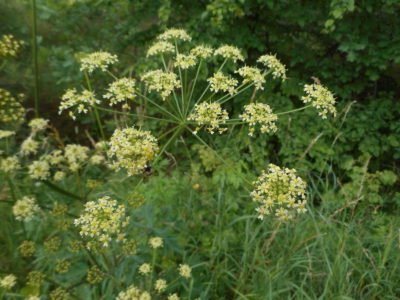

Description
On the territory of the former Soviet Union, there are more than 30 species of these weeds from the Borshevik genus (or Heraclium). In total, there are at least 65 varieties of hogweed in the world. And on the territory of our country, there are no more than 15 species.
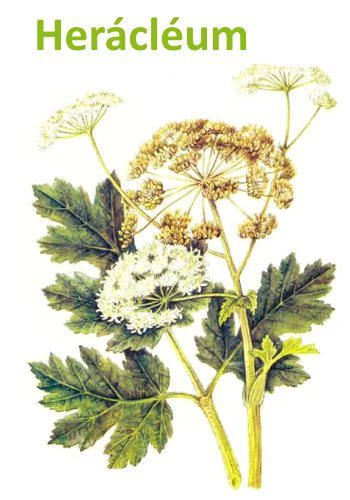

Herácléum
Some varieties of this weed reach a height of 4 - 4.5 m, and the main umbrella-shaped inflorescence reaches 1.0 - 1.1 m in diameter, and sometimes up to 1.5 m.Its flowers are excellent honey plants, they flock to the smell and bees and wasps. The foliage of these weeds reaches considerable lengths - up to 2 - 2.5 m, and in some specimens the length is 2.8 - 3.0 m.
Therefore, the people call this type of weed "Hercules grass".
In our country, the name of this plant was given because it was used in the preparation of borscht. And in a number of regions of our country the name was shortened to "Borshchenya". Another name is "bear paw" because of the shape and size of the foliage.
Diseases and pests
This plant is minimally susceptible to disease and pests. However, when flooded, hogweed can get sick with powdery mildew. To eliminate it, the culture must be treated with Fitoverm, diluting it according to the instructions on the package.
Also, when the soil is waterlogged, the plant can attack the weevil. To destroy the pest, you should use the insecticide "Decis". The rest of the ailments and pests of culture are not terrible.
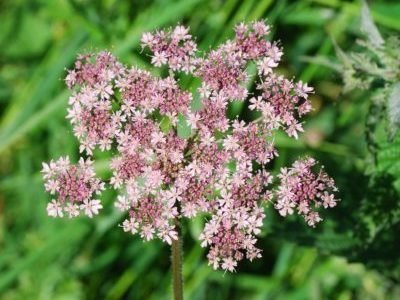

Propagation of hogweed by seeds
The culture is propagated by self-seeding. The seeds sprout and grow quickly. They can be collected and sown by force. The collection of seed material is carried out in the fall, after which it is immediately sown into the ground before the first frost begins.
When sowing seeds in spring, they should be stratified. A young plant blooms only in the second year after planting. In one place it grows up to eight years, after which it loses its decorative effect and begins to dry out.
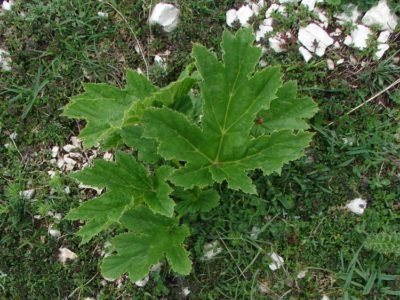

Output
The hogweed weed, or rather its mass distribution, can be safely called a human mistake, which led to disastrous results. Today it is aggravated by the fact that many villages are in desolation, land plots are not cultivated by anyone and are abundantly overgrown with weeds. The wind does its job, carrying weed seeds over long distances. Therefore, it is worth being extremely careful when plants that vaguely resemble hogweed appear, and take urgent measures to destroy them.
Chemical composition
There is an interesting fact that earlier hogweed was used for cooking. This is due to its unique composition.
Main components:
- sugar - 10%;
- vegetable protein - 16%;
- essential oils - 2%;
- fiber, amino acids, tannins - 23%;
- vitamin C - 212 mg per 100 g.
The composition also contains useful minerals such as iron, titanium, boric, nickel, copper, manganese and carotene compounds. It also includes octyl ether, which fights against Trichomonas pathogens, which lead to inflammation of the mucous membranes, inflammation of the kidneys and biliary tract.
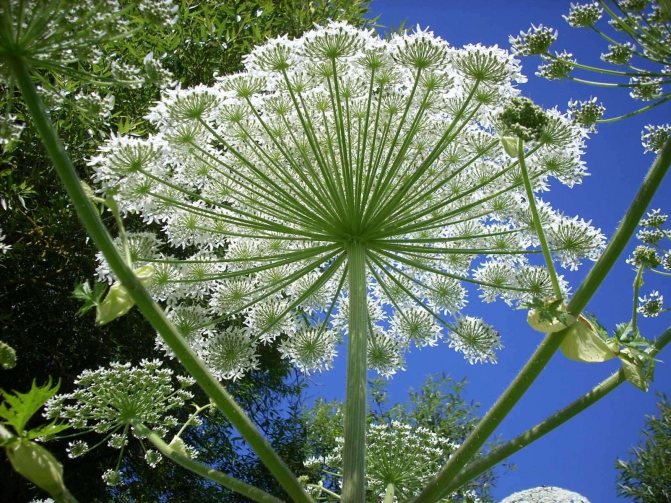

Previously, hogweed was added to food
Application
In some regions of Russia, young cow parsnip leaves were collected in spring and added to the first courses, primarily to borscht. Young stems of this plant were pickled, the foliage was used for pickling, and even candied fruits were prepared from the shoots. The foliage of the hogweed was also dried, only pre-soaked for several hours to remove some of the active substances - essential oils, coumarins and some others. The root system of this weed contains a large amount of sugars, so sugar was produced from them, and alcoholic beverages were also prepared.
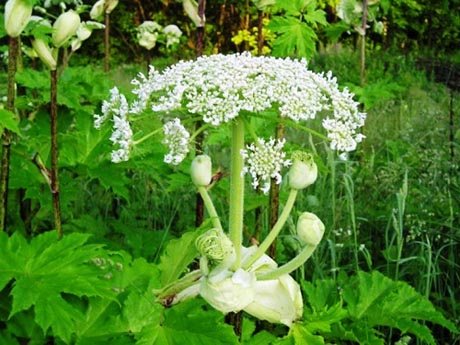

Sosnovsky hogweed
In some regions of the Caucasus, this plant is included in the diet of not only livestock, but is also present on the human table.
But in the United States of America, only one species of this weed grows - woolly hogweed, which is close to our sweet hogweed, which grows in the Far East. There it is actively used for cooking food in the spring.
And only one species of hogweed is poisonous to humans and dangerous to domestic animals - Sosnovsky's hogweed.
It spreads rapidly in wastelands, along the edges of village roads, and in neglected fields.
Under natural conditions, another species of this plant is most often found - Siberian hogweed.But this type of weed does not cause severe skin burns or serious dermatoses, because the level of coumarin (which is the cause of skin damage) in them is low.
Growing and care
Since hogweed very easily propagates by seeds and gives good self-seeding, it makes no sense to use vegetative propagation methods. Usually, the seeds are harvested slightly unripe, as they quickly crumble. You can also tie the umbrellas with gauze. After drying, crops are sown directly into open ground. In the middle of autumn, before the onset of frost, they are sealed to a depth of 2-3 cm. Additional shelter is not required. In the spring, after the snow melts, the first shoots appear. At first, the rhizome and green mass are actively developing. Flowering begins from the second to eighth year of life. You can also sow hogweed in the spring, but before that, the seeds are placed in the refrigerator for 2-3 weeks for stratification.
In general, the plant is quite unpretentious and tenacious. It is undemanding to the composition of the soil and place. You will have to take care of the hogweed insignificantly. But there are also optimal growth conditions required for decorative forms.
Lighting. The plant grows well in bright sun, in direct sunlight, but it can also be in partial shade.
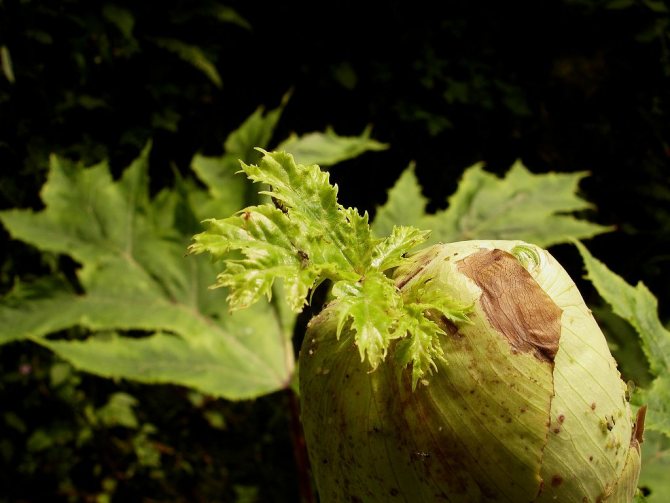

Temperature. The hogweed is very hardy. It withstands heat up to + 45 ° C and frost down to -35 ° C equally well. In the summer, he does not need protection, and in the winter, the shelter of the soil at the roots.
Watering. Although the plant can withstand short-term droughts, regular watering is essential for rapid growth and dense green growth. However, water stagnation in the soil should not be allowed so that root rot does not develop. It is useful to loosen the soil surface from time to time. Weeds are removed near young plants, strong specimens perfectly suppress them on their own.
Fertilizers. A hogweed can completely do without fertilizers. If the soil is very poor or you need to get lush bushes faster, you can carry out a one-time feeding. It is planned for the spring. A mullein solution is poured under the bushes or a complex mineral fertilizer is used.
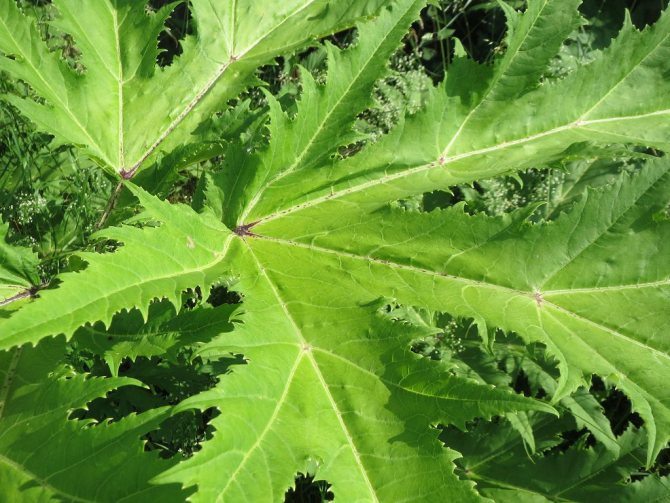

What should be done if a meeting with a hogweed could not be avoided?
Knowing how dangerous the hogweed is, doctors recommend taking urgent measures after contact with it. Namely:
- Wash the affected skin with running water and laundry soap.
- Pour an alcohol-containing liquid (cologne, vodka, etc.) or a weak solution of potassium permanganate or furacilin over the burned areas.
- You can use for treatment with drugs such as "Panthenol", sodium usninate (on fir balsam) or synthomycin liniment. Fixing bandages are strictly prohibited.
- After providing first aid, you should consult a doctor. And if harmful substances have affected the mucous membranes (for example, eyes), this should be done immediately.
- Block the access of sunlight to the affected areas for at least two days.
In a high-risk area
The cow parsnip is especially dangerous for young children, the elderly, people with low immunity and light-skinned blondes. Allergy sufferers who are sensitive to the effects of essential oils are also at risk of death. Hazardous substances can swell their larynx, sometimes leading to suffocation. The listed categories of citizens, like no one else, should stay away from the hogweed.
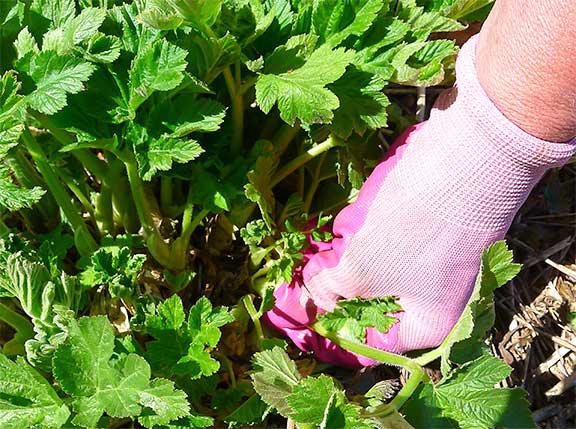

Using the plant in other fields
In ancient Russia, borscht was cooked from leaves and rhizomes.
Young shoots were put in the form of filling in pies. Since the foliage tastes like carrots, it was cut and put in salads, side dishes, and mashed. The stems were scalded and peeled, then eaten raw, and fried or boiled. The peasants of the Urals and Siberia cooked jam, sugar, jams, jam from the stems.
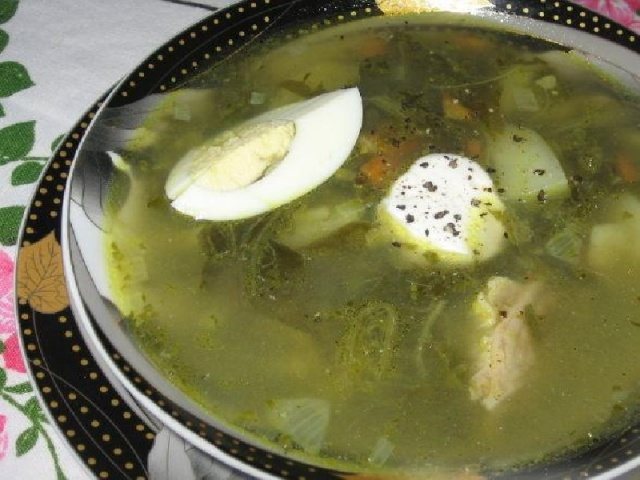

N-octyl alcohol is produced from hogweed seeds; it is used in perfumery.
Hogweed honey tastes great.
In agriculture, silage is prepared from hogweed, since grass is not suitable for hay, because it has large leaves, they do not dry out well and often rot. Silage is fed to livestock.

